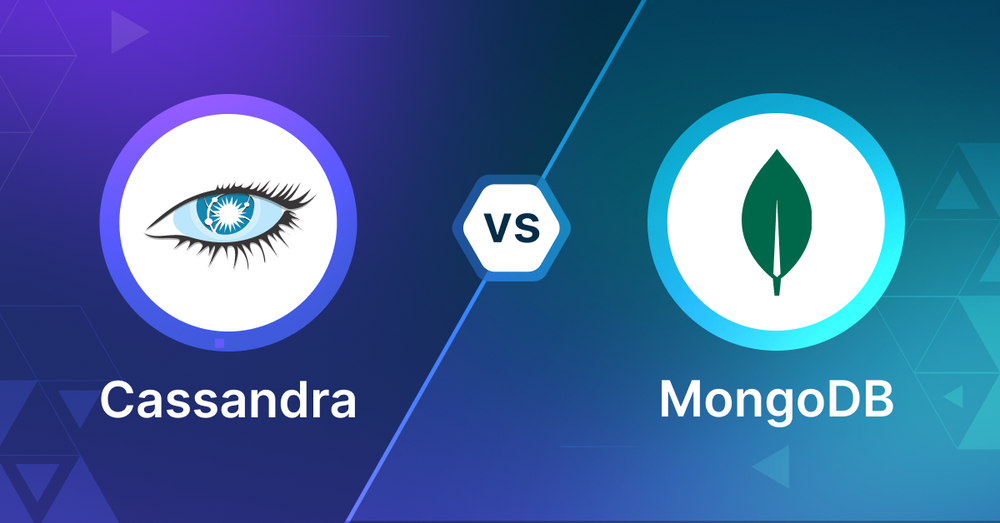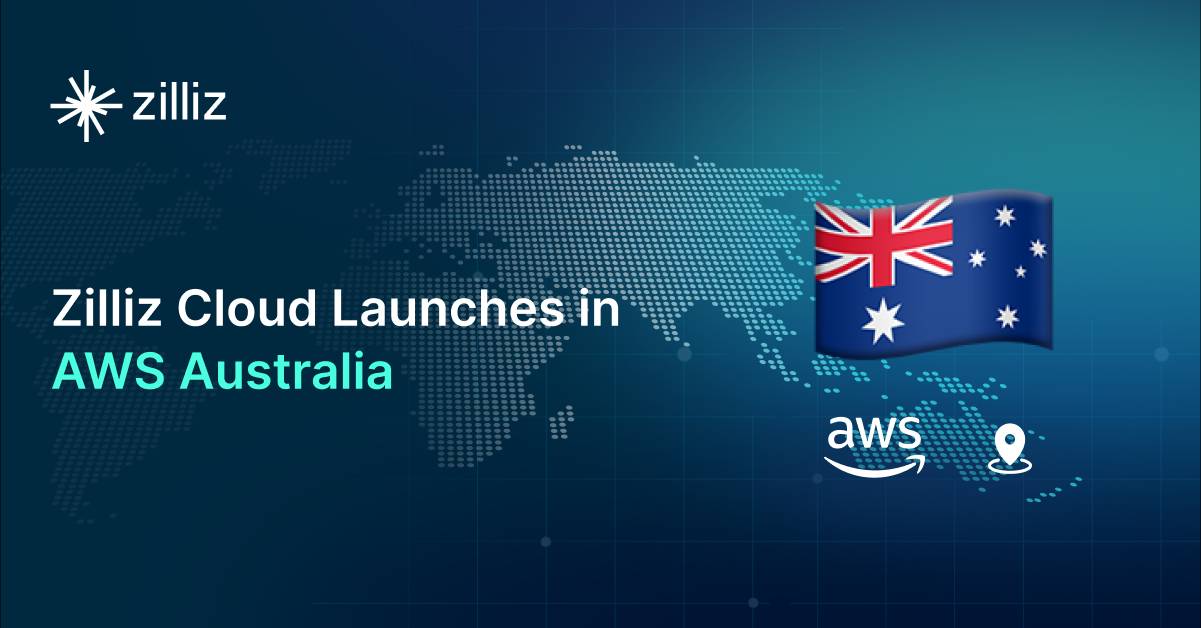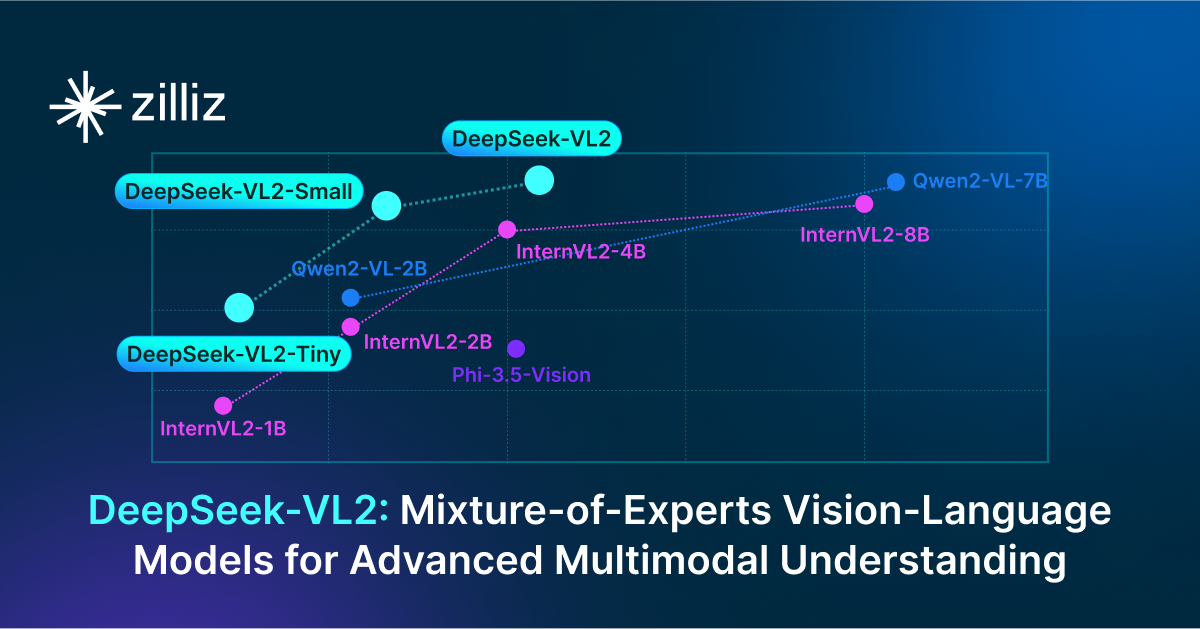Apache Cassandra vs MongoDB: Choosing the Right Vector Database for AI Applications

Introduction
With the growing importance of AI-driven applications, managing and searching large datasets efficiently is more critical than ever. Apache Cassandra and MongoDB are two leading NoSQL databases known for their scalability and flexibility, but they have fundamental differences that influence their suitability for different workloads. As vector search—a key capability in AI tasks like recommendation engines, NLP, and RAG—becomes increasingly important, it’s vital to understand how these databases compare, especially when handling vector embeddings and similarity searches.
This article will explore the differences between Apache Cassandra and MongoDB, focusing on their suitability as vector databases, core features, and key differences in data handling, scalability, flexibility, and security.
What is a Vector Database?
Before we compare Apache Cassandra and MongoDB, let's first explore the concept of vector databases.
A vector database is specifically designed to store and query high-dimensional vectors, which are numerical representations of unstructured data. These vectors encode complex information, such as the semantic meaning of text, the visual features of images, or product attributes. By enabling efficient similarity searches, vector databases play a pivotal role in AI applications, allowing for more advanced data analysis and retrieval.
Common use cases for vector databases include e-commerce product recommendations, content discovery platforms, anomaly detection in cybersecurity, medical image analysis, and natural language processing (NLP) tasks. They also play a crucial role in Retrieval Augmented Generation (RAG), a technique that enhances the performance of large language models (LLMs) by providing external knowledge to reduce issues like AI hallucinations.
There are many types of vector databases available in the market, including:
- Purpose-built vector databases such as Milvus, Zilliz Cloud (fully managed Milvus)
- Vector search libraries such as Faiss and Annoy.
- Lightweight vector databases such as Chroma and Milvus Lite.
- Traditional databases with vector search add-ons capable of performing small-scale vector searches.
Overview of Apache Cassandra
Apache Cassandra is a distributed NoSQL database that handles large amounts of structured and semi-structured data across many servers. Its architecture ensures fault tolerance and high availability by replicating data across multiple nodes, making it highly resilient. Cassandra’s scalability allows for the linear growth of datasets, making it a popular choice for industries dealing with high write-throughput environments, such as telecommunications and IoT.
Cassandra’s primary strength lies in its write-optimized architecture, making it ideal for applications where data is ingested at high speeds and needs to be distributed across multiple nodes. Although not originally designed for vector search, Cassandra can be extended with tools like DataStax, which allows for adding vector search capabilities. However, this setup often requires additional configurations, making it more complex for developers looking to implement machine learning workloads.
Overview of MongoDB
MongoDB is a document-based NoSQL database that offers a flexible, schema-less data model. Unlike Cassandra, which excels with structured and semi-structured data, MongoDB is better suited for applications requiring frequent data structure changes or involving highly variable data formats. It supports various data types, including unstructured data like JSON documents, multimedia files, etc.
MongoDB is often used in applications where real-time data access and flexibility are paramount. Its document-based model allows for greater adaptability, making it easy to store and query dynamic data. MongoDB also supports complex queries, geospatial searches, and full-text searches, making it well-suited for real-time data analysis applications.
MongoDB also offers Atlas, a managed cloud version of its database, which includes built-in support for vector search. This feature simplifies the implementation of AI-driven applications by allowing developers to run similarity searches without needing external tools or third-party libraries. MongoDB’s ability to natively integrate vector search sets it apart from Cassandra, especially in use cases where real-time performance and scalability are crucial for AI workloads.
Key Differences Between Apache Cassandra and MongoDB
Search Methodology
Cassandra and MongoDB take different approaches to search capabilities, particularly vector search. Cassandra requires third-party tools like DataStax to handle vector searches, adding complexity to the setup. This allows developers to tailor the search algorithms to their specific needs but involves more manual effort. In contrast, MongoDB provides built-in vector search functionality, particularly in MongoDB Atlas, where developers can easily implement similarity searches alongside traditional queries. This native support makes MongoDB more user-friendly for AI-driven applications that rely heavily on vector embeddings.
Data Handling
Both Cassandra and MongoDB are highly flexible, but their strengths differ based on the type of data being managed. Cassandra is designed to handle structured and semi-structured data, offering a columnar data model that excels in write-heavy environments. However, handling unstructured data in Cassandra requires more effort and customization.
On the other hand, MongoDB is better suited for unstructured and dynamic data, thanks to its document-based architecture. MongoDB allows for schema flexibility, enabling developers to store and query data more easily as it evolves over time. This makes MongoDB a natural fit for applications that require high adaptability, such as web and mobile apps, where data structures often change.
Scalability and Performance
Both databases are built for horizontal scalability, but their performance profiles differ based on the workload. Cassandra is known for its linear scalability, making it a strong choice for applications that require massive write throughput and fault tolerance. Its peer-to-peer architecture ensures no single point of failure, making it resilient to node crashes and failures.
MongoDB also scales horizontally and supports sharding, but it’s more optimized for read-heavy workloads and real-time queries. MongoDB’s indexing capabilities help optimize performance in applications where real-time data access is crucial, such as recommendation engines and search systems.
Flexibility and Customization
Cassandra provides flexibility in data modeling, especially for distributed systems, but lacks the native vector search capabilities that MongoDB offers. While Cassandra can be customized with external libraries to handle AI-driven workloads, this increases setup complexity. MongoDB’s built-in vector search and schema-less design provide greater flexibility and ease of use, particularly for applications that require frequent schema changes or rapid deployment of AI features.
Integration and Ecosystem
Cassandra integrates well with big data tools like Apache Spark and Hadoop, making it suitable for large-scale analytics and distributed computing environments. However, integrating AI and machine learning features often requires additional plugins or third-party tools.
MongoDB’s ecosystem is more natively aligned with AI and machine learning workloads. It integrates easily with modern development frameworks and libraries like TensorFlow and PyTorch, making it simpler to incorporate machine learning models directly into applications without additional setup.
Ease of Use
Cassandra’s distributed nature and requirement for third-party tools to enable vector search make it more complex to set up and manage. Its learning curve is steeper, particularly for developers who are new to distributed systems or vector search capabilities.
MongoDB, especially with Atlas, is designed with ease of use in mind. Atlas automates many operational tasks like backups, scaling, and monitoring, reducing the administrative overhead for developers. The native support for vector search also makes MongoDB a more straightforward choice for teams looking to quickly implement AI features without the need for extensive configuration.
Cost Considerations
Cassandra is open-source, making it a cost-effective choice when run on commodity hardware. However, managing and scaling large Cassandra clusters can incur significant operational costs, especially when third-party solutions are used for vector search.
MongoDB, particularly its managed service Atlas, includes operational costs for scaling, backups, and monitoring. While Atlas simplifies database management, its cost structure can increase with advanced features like Atlas Search and scaling for large datasets. Both databases offer flexible pricing depending on your infrastructure and scaling needs.
Security Features
Both databases offer comprehensive security features, including encryption and role-based access controls. Cassandra offers encryption both at rest and in transit, with support for auditing and access controls, which can be extended with commercial offerings like DataStax. MongoDB provides similar encryption features, with the added benefit of managed security through Atlas, including compliance with major data governance standards.
When to ChooseApache Cassandra and MongoDB?
Choosing between Apache Cassandra and MongoDB depends on your specific needs. Cassandra is better for environments requiring high availability, fault tolerance, and massive scalability, particularly for write-heavy workloads. However, its lack of native vector search support and reliance on third-party tools make it a less convenient option for AI-driven applications.
On the other hand, MongoDB offers more flexibility in handling unstructured data, real-time performance, and ease of use. With built-in vector search capabilities, MongoDB is a strong choice for AI applications that require similarity searches, recommendation engines, or NLP. Its integration with modern machine learning libraries and frameworks makes it an excellent choice for teams focused on quickly developing AI-driven solutions.
In short, if you prioritize scalability and write performance, Cassandra may be the better option. If real-time AI features and vector search are core requirements, MongoDB is likely the better fit. Understanding your application’s specific needs will guide your decision.
When to Choose a Specialized Vector Database?
While Apache Cassandra and MongoDB offer vector search capabilities, they are not optimized for large-scale, high-performance vector search tasks. If your application relies on fast, accurate similarity searches over millions or billions of high-dimensional vectors, such as in image recognition, e-commerce recommendations, or NLP tasks, specialized vector databases like Milvus and Zilliz Cloud (the managed Milvus) are a better fit. These databases are built to handle vector data at scale, using advanced Approximate Nearest Neighbor (ANN) algorithms (e.g., HNSW, IVF ) and offering advanced features like hybrid search (including hybrid sparse and dense search, multimodal search, vector search with metadata filtering, and hybrid dense and full-text search), real-time ingestion, and distributed scalability for high-performance in dynamic environments.
On the other hand, general-purpose systems like Apache Cassandra and MongoDB are suitable when vector search is not the primary focus, and you’re handling structured or semi-structured data with smaller vector datasets or moderate performance requirements. If you already use these systems and want to avoid the overhead of introducing new infrastructure, vector search plugins can extend their capabilities and provide a cost-effective solution for simpler, lower-scale vector search tasks.
Using Open-source VectorDBBench to Evaluate and Compare Vector Databases on Your Own
VectorDBBench is an open-source benchmarking tool designed for users who require high-performance data storage and retrieval systems, particularly vector databases. This tool allows users to test and compare the performance of different vector database systems such as Milvus and Zilliz Cloud (the managed Milvus) using their own datasets, and determine the most suitable one for their use cases. Using VectorDBBench, users can make informed decisions based on the actual vector database performance rather than relying on marketing claims or anecdotal evidence.
VectorDBBench is written in Python and licensed under the MIT open-source license, meaning anyone can freely use, modify, and distribute it. The tool is actively maintained by a community of developers committed to improving its features and performance.
Download VectorDBBench from its GitHub repository to reproduce our benchmark results or obtain performance results on your own datasets.
Take a quick look at the performance of mainstream vector databases on the VectorDBBench Leaderboard.
Read the following blogs to learn more about vector database evaluation.
Further Resources about VectorDB, GenAI, and ML
- Introduction
- What is a Vector Database?
- Overview of Apache Cassandra
- Overview of MongoDB
- Key Differences Between Apache Cassandra and MongoDB
- When to Choose**Apache Cassandra** and **MongoDB?**
- When to Choose a Specialized Vector Database?
- Using Open-source VectorDBBench to Evaluate and Compare Vector Databases on Your Own
- Further Resources about VectorDB, GenAI, and ML
Content
Start Free, Scale Easily
Try the fully-managed vector database built for your GenAI applications.
Try Zilliz Cloud for FreeKeep Reading

Zilliz Cloud Launches in AWS Australia, Expanding Global Reach to Australia and Neighboring Markets
We're thrilled to announce that Zilliz Cloud is now available in the AWS Sydney, Australia region (ap-southeast-2).

Milvus WebUI: A Visual Management Tool for Your Vector Database
Milvus WebUI is a built-in GUI introduced in Milvus v2.5 for system observability. WebUI comes pre-installed with your Milvus instance and offers immediate access to critical system metrics and management features.

DeepSeek-VL2: Mixture-of-Experts Vision-Language Models for Advanced Multimodal Understanding
Explore DeepSeek-VL2, the open-source MoE vision-language model. Discover its architecture, efficient training pipeline, and top-tier performance.
The Definitive Guide to Choosing a Vector Database
Overwhelmed by all the options? Learn key features to look for & how to evaluate with your own data. Choose with confidence.